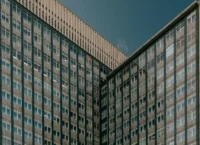- Home
- Articles
- Architectural Portfolio
- Architectral Presentation
- Inspirational Stories
- Architecture News
- Visualization
- BIM Industry
- Facade Design
- Parametric Design
- Career
- Landscape Architecture
- Construction
- Artificial Intelligence
- Sketching
- Design Softwares
- Diagrams
- Writing
- Architectural Tips
- Sustainability
- Courses
- Concept
- Technology
- History & Heritage
- Future of Architecture
- Guides & How-To
- Art & Culture
- Projects
- Interior Design
- Competitions
- Jobs
- Store
- Tools
- More
- Home
- Articles
- Architectural Portfolio
- Architectral Presentation
- Inspirational Stories
- Architecture News
- Visualization
- BIM Industry
- Facade Design
- Parametric Design
- Career
- Landscape Architecture
- Construction
- Artificial Intelligence
- Sketching
- Design Softwares
- Diagrams
- Writing
- Architectural Tips
- Sustainability
- Courses
- Concept
- Technology
- History & Heritage
- Future of Architecture
- Guides & How-To
- Art & Culture
- Projects
- Interior Design
- Competitions
- Jobs
- Store
- Tools
- More
100 Years of Art Deco: Celebrating a Century of Timeless Design and Modern Influence
Discover 100 years of Art Deco, the timeless design movement that blends bold geometry, luxury, and global influences. From iconic skyscrapers to glamorous décor, explore its origins, evolution, and lasting impact on architecture, fashion, and art. See how this 1920s innovation continues to inspire contemporary design and culture across the globe.

Art Deco has been captivating us for a century with its bold geometry, rich colors, and luxurious flair. Born in the 1920s, this iconic design movement swept across architecture, fashion, art, and more, leaving an indelible mark on global culture. Its sleek elegance reflected the optimism and modernity of a rapidly changing world.
Even after 100 years, Art Deco’s influence is impossible to ignore. From the shimmering skyscrapers of New York to vintage jewelry and graphic design, its timeless aesthetic continues to inspire. Let’s take a closer look at how this dazzling style has shaped our world and why it still resonates today.

Table of Contents
ToggleThe Origins Of Art Deco
Art Deco originated during a period of rapid societal and technological transformation in the early 20th century. Emerging in the 1920s, it reflected the optimism and innovation of the time.

The Birth Of A Global Movement
Art Deco formally debuted at the 1925 International Exhibition of Modern Decorative and Industrial Arts held in Paris. This event showcased innovative designs combining functionality with ornamentation. While it began in France, the style quickly gained international prominence, influencing architecture, fashion, visual arts, and industrial design in North America, Europe, and beyond.
Influences And Inspirations
Art Deco drew from a diverse range of influences, blending historical and contemporary elements. Ancient Egyptian, Greek, and Aztec motifs merged with the sleek lines of industrial machinery and modernist trends. Cubism, Futurism, and Constructivism also inspired its geometric forms and bold visual language. These eclectic inspirations made Art Deco a reflection of its era, celebrating progress and global cultural exchange.
The Golden Age Of Art Deco
The 1920s and 1930s marked the peak of Art Deco’s influence, reflecting the prosperity, optimism, and technological advancement of the interwar period. This era deeply shaped urban landscapes, interior design, and artistic expression.

Architecture And Urban Transformation
Art Deco revolutionized architecture, blending form and function with striking visual appeal. Urban centers like New York City, Miami, and Chicago saw the rise of iconic Art Deco skyscrapers, including the Chrysler Building and the Empire State Building. These structures showcased sleek vertical lines, geometric ornamentation, and innovative materials like stainless steel and chrome.
Globally, the style adapted to regional characteristics. In Paris, streamlined façades and intricate ironwork became common, while in Mumbai, India’s cultural motifs merged with Art Deco aesthetics. This architectural diversity reinforced the movement’s ability to resonate internationally.
Iconic Design And Decorative Arts
Decorative arts flourished during this period, embodying luxury and craftsmanship. Furniture pieces incorporated exotic materials such as ebony, ivory, and lacquer, while geometric motifs dominated designs. Artists like Émile-Jacques Ruhlmann elevated furniture to an art form with elegant details and modernist influences.
Jewelry and fashion embraced Art Deco’s opulence, featuring clean lines, bold colors, and rare gemstones. Cartier’s Tutti Frutti collection exemplified this aesthetic with vivid hues and symmetrical patterns. Equally impactful, graphic design employed bold typography and dynamic compositions in advertising, posters, and packaging, solidifying Art Deco’s visual language across mediums.
Art Deco Around The World
Art Deco’s global impact can be traced in its adaptation to diverse cultures and regions. This universality is marked by unique local influences and cross-cultural elements shaping the movement.

Regional Variations
Art Deco embraced regional aesthetics while maintaining its core themes of luxury and modernity. In North America, sleek skyscrapers like New York’s Chrysler Building epitomized urban modernism. Europe favored geometric ornamentation and materials like glass and chrome, evident in Parisian landmarks like Théâtre des Champs-Élysées.
In South America, cities like Rio de Janeiro showcased exuberant Art Deco styles in public buildings and sculptures, blending tropical motifs. African elements influenced patterns and design concepts, reflected in works inspired by Egyptian and tribal art. Meanwhile, in Asia, cities such as Shanghai and Mumbai featured hybrid designs incorporating traditional architecture, adding depth to the movement.
Cross-Cultural Impact
Art Deco fostered a dynamic exchange of global creativity. The movement’s designers often integrated motifs from ancient civilizations, including Greek, Egyptian, and Mayan cultures, into contemporary forms. International artists and architects collaborated, exchanging ideas and techniques, visible in the movement’s eclectic designs.
The rise of international exhibitions, like the 1925 Paris Expo, exposed audiences to this cultural synthesis. Innovations in travel and communication enabled the rapid spread of stylistic elements, defining Art Deco’s global reach. From textiles featuring Japanese kimonos to ceramics with African patterns, the movement merged regional artistry with modern design principles to create timeless works.
The Revival And Legacy Of Art Deco
Art Deco’s influence didn’t fade with time. Instead, its revival in the late 20th century and its continued appreciation today affirm its enduring impact on design and culture.

Renewed Popularity In The Late 20th Century
The late 20th century witnessed a resurgence of interest in Art Deco, particularly during the 1960s and 1980s. This renewed focus emerged as preservation efforts aimed to restore iconic Art Deco buildings, such as those in Miami Beach’s South Beach Historic District. These campaigns highlighted the style’s architectural significance and artistic value.
Reproductions of Art Deco furniture, artwork, and decorative pieces became popular, reflecting nostalgia for its elegance. Films like “The Great Gatsby” (1974) featured Art Deco-inspired sets, further reintroducing audiences to its luxurious aesthetic. Collectors actively sought vintage jewelry, posters, and home décor, cementing its status as a timeless design movement.
Modern-Day Appreciation And Influence
Art Deco remains a prominent influence in contemporary design. Architecture continues to incorporate its clean lines and geometric forms, as seen in modern skyscrapers and residential developments inspired by the movement. Designers frequently reinterpret Art Deco motifs in fashion collections, echoing its legacy with metallic details, bold colors, and structured silhouettes.
Interior design embraces Art Deco’s opulence, utilizing materials like marble, brass, and lacquer. In graphic design, contemporary branding employs bold typography and symmetrical layouts reminiscent of the style’s iconic features. Popular culture celebrates its heritage through exhibitions, such as those at the Victoria and Albert Museum, and events featuring Art Deco themes. This lasting inspiration highlights its seamless integration with innovative and modern design trends.
Conclusion
Art Deco remains a defining force in design, bridging historical influences and modern innovation across a century of evolution. Its global resonance stems from its ability to adapt and elevate, whether through architectural marvels like the Chrysler Building or decorative arts that epitomize craftsmanship and luxury. From the 1920s to today, Art Deco has left an indelible mark on design, enriching cultural and artistic landscapes worldwide.
- 1920s Art Deco
- Art Deco aesthetics
- Art Deco architecture
- Art Deco artists
- Art Deco celebration
- Art Deco design
- Art Deco exhibition
- Art Deco fashion
- Art Deco furniture
- Art Deco history
- Art Deco influence
- Art Deco interior design
- Art Deco motifs
- Art Deco movement
- Art Deco patterns
- Art Deco revival
- Art Deco style
- Centennial Art Deco
- classic Art Deco
- Iconic Art Deco
- Modern Art Deco
- timeless design
- Vintage Art Deco
Submit your architectural projects
Follow these steps for submission your project. Submission FormLatest Posts
Dependable Service for Everyday Appliance Problems
When a washer stalls mid-cycle or a fridge warms up, you need...
8 Essential Web-Based Mapping Tools for Modeling Sea Level Rise and Flood Impacts
As climate change accelerates, flood risk and sea level rise have become...
How Sydney’s Architecture Responds to Climate, Light, and Lifestyle
Sydney’s architecture has never been driven by form alone. It evolves through...
Shipping Containers as Functional Infrastructure on Construction Sites
Construction sites are temporary by definition, yet the systems that support them...












Leave a comment